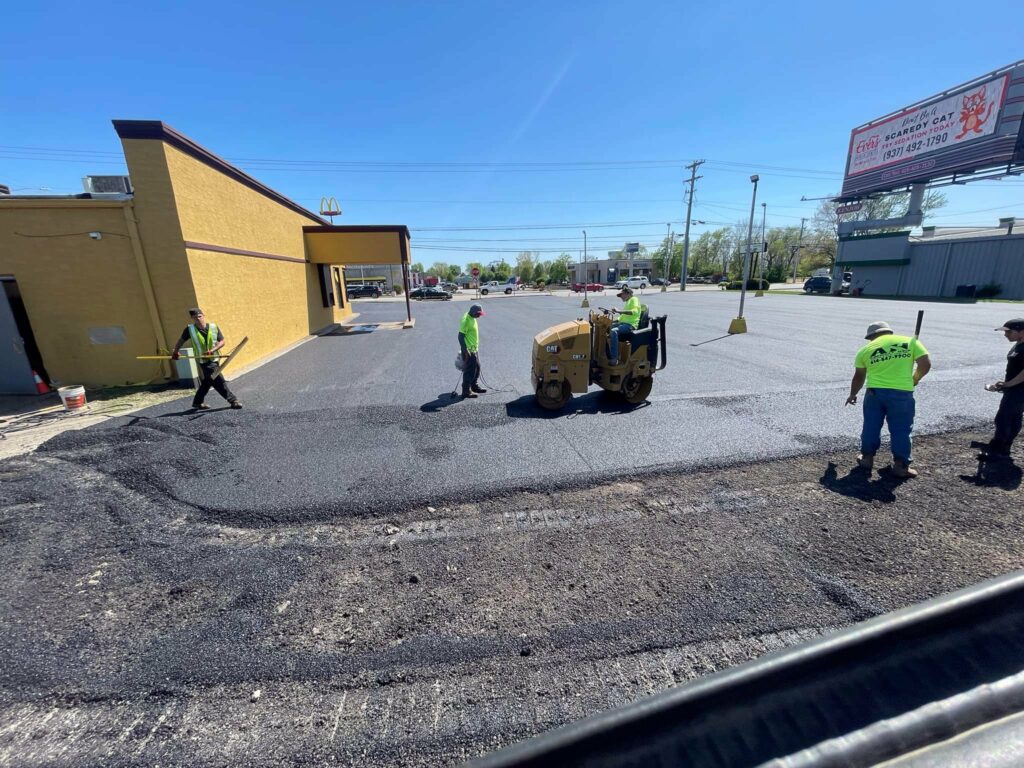
A well-paved parking lot is more than just a surface to park cars—it’s the first impression your business makes. In 2025, maintaining a clean, safe, and functional lot has become even more crucial due to increased traffic demands and updated safety standards. If you’re a commercial property owner, now is the time to understand what parking lot paving involves and how it impacts your property’s value and usability.
Proper planning, materials, and execution can significantly extend the lifespan of your lot, reduce liability risks, and enhance curb appeal. This guide walks you through everything you need to know about commercial parking lot paving.
Understanding Parking Lot Milling & Paving in Lancaster, OH
If you’re located in Lancaster, OH, your parking lot experiences extreme weather fluctuations throughout the year, making Parking Lot Milling & Paving an essential process to ensure long-term durability. Milling involves removing the top layer of damaged asphalt without disturbing the base, which is then followed by repaving. This method is both cost-effective and environmentally responsible, offering a smoother finish and better drainage.
Local contractors in Lancaster, OH are well-versed in meeting city codes and understanding how weather impacts materials and timelines. Choosing a company familiar with these elements is key to a successful outcome.
Steps Involved in Commercial Parking Lot Paving
A commercial paving project usually follows these key steps:
1. Site Assessment and Planning
The paving contractor evaluates the current condition of your lot, drainage issues, and soil stability. This helps determine whether full replacement or milling and overlay is needed.
2. Excavation and Base Preparation
Old materials are removed, and the base layer is built using crushed stone or gravel, compacted for strength and proper water flow.
3. Asphalt Application
The new asphalt is poured, leveled, and compacted. Commercial-grade asphalt is typically thicker and more durable than residential asphalt.
4. Curing and Line Striping
After the pavement cures (usually 24–48 hours), lines for parking spaces, crosswalks, and fire lanes are painted.
Why Businesses Trust Eli’s Paving
Many commercial property owners in Lancaster rely on Eli’s Paving for their professional approach, quality materials, and strict adherence to deadlines. Their experience with both milling and full installation ensures that your investment pays off with long-lasting results. Whether you’re managing a retail center, office complex, or industrial facility, they offer customized solutions based on your site’s unique needs.
Benefits of Professional Parking Lot Paving
-
Improved Safety: Smooth, crack-free surfaces reduce tripping and vehicle damage risks.
-
Better Drainage: Professional grading and paving prevent water pooling and structural damage.
-
Enhanced Appearance: A freshly paved lot gives your business a professional and welcoming look.
-
Compliance: Proper striping and layout ensure ADA compliance and efficient traffic flow.
How Often Should You Re-Pave a Commercial Lot?
On average, a commercial parking lot lasts 15–20 years with proper care. If you notice issues like standing water, potholes, or large cracks, it may be time for resurfacing or replacement. Regular maintenance such as sealcoating and crack filling extends the lifespan and reduces long-term costs.
Conclusion
A successful parking lot paving project combines planning, high-quality materials, and expert execution. In Lancaster, OH, climate and local regulations make it even more important to choose a contractor who understands both environmental and legal factors. By investing in professional Parking Lot Milling & Paving, you’re not only improving your property’s appearance but also ensuring safety and long-term value.
Whether you need a full replacement or a resurfacing project, working with experienced providers like Eli’s Paving ensures your lot meets modern standards and performs for years to come.
FAQs
1. What is the difference between milling and full replacement?
Milling removes only the surface layer of damaged asphalt, while full replacement involves excavating and rebuilding the base and surface layers.
2. How long does parking lot paving take?
Most commercial projects are completed in 1–5 days depending on size, weather, and required prep work.
3. When is the best time to schedule paving in Lancaster, OH?
Late spring to early fall offers the best weather conditions for paving and curing.
4. How do I maintain my newly paved lot?
Sealcoat every 2–3 years, address cracks promptly, and ensure proper drainage to avoid premature damage.
5. Is line striping included in the paving service?
Yes, most professional paving contractors include ADA-compliant striping as part of the final step in the project.